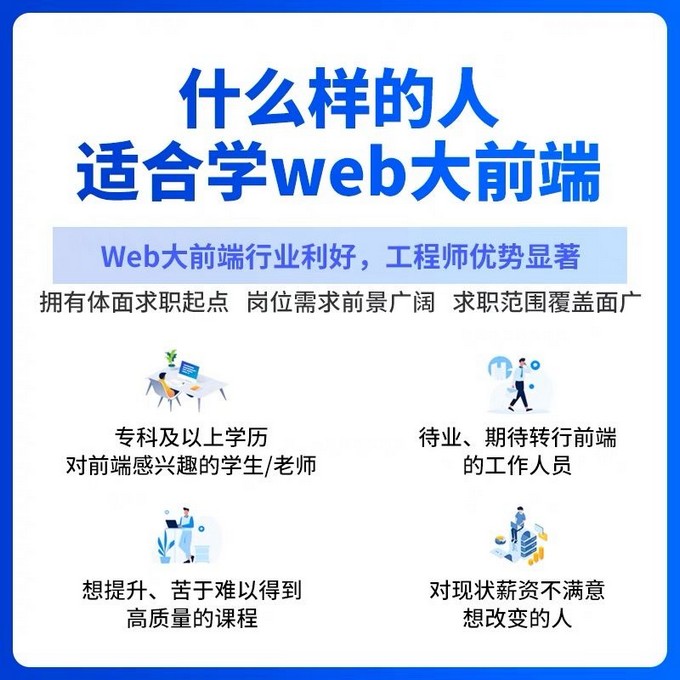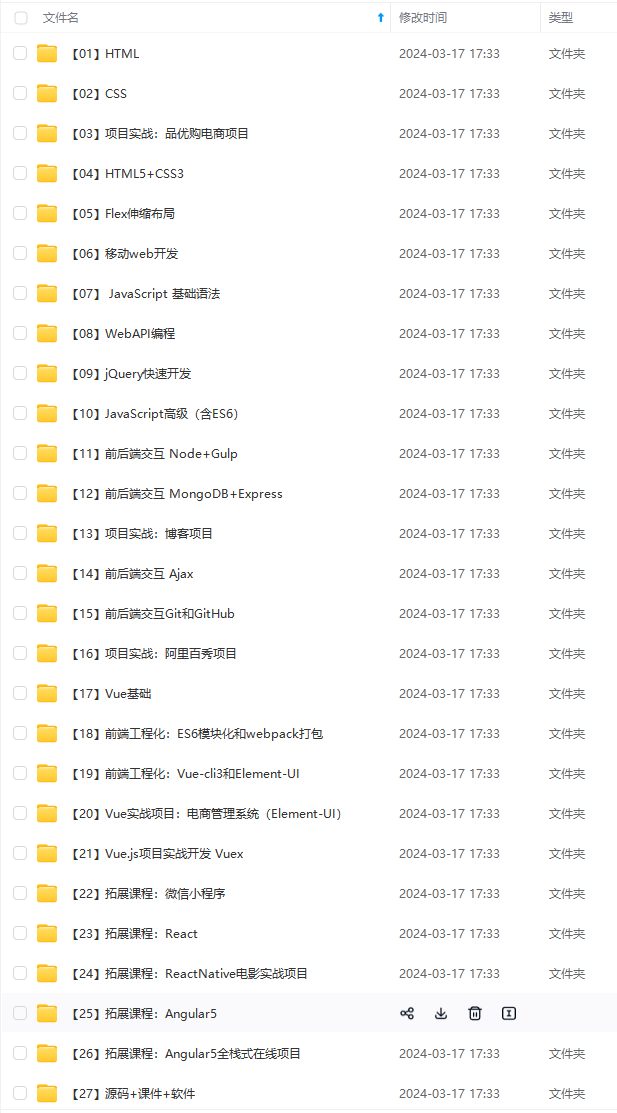res => {
console.log(res)
},
err => {}
)
我们首先要实现一个 Promise 的类,这个类的构造函数会传入一个函数作为参数,并且向该函数传入 resolve 和 reject 两个方法。
初始化 Promise 的状态为 pending。
class MyPromise {
constructor(executor) {
this.executor = executor
this.value = null
this.status = ‘pending’
const resolve = value => {
if (this.status === ‘pending’) {
this.value = value // 调用 resolve 后记录 resolve 的值
this.status = ‘fulfilled’ // 调用 resolve 扭转 promise 状态
}
}
const reject = value => {
if (this.status === ‘pending’) {
this.value = value // 调用 reject 后记录 reject 的值
this.status = ‘rejected’ // 调用 reject 扭转 promise 状态
}
}
this.executor(resolve, reject)
}
(2)接下来要实现 promise 对象上的 then 方法,then 方法会传入两个函数作为参数,分别作为 promise 对象 resolve 和 reject 的处理函数。
这里要注意三点:
- then 函数需要返回一个新的 promise 对象
- 执行 then 函数的时候这个 promise 的状态可能还没有被扭转为 fulfilled 或 rejected
- 一个 promise 对象可以同时多次调用 then 函数
class MyPromise {
constructor(executor) {
this.executor = executor
this.value = null
this.status = ‘pending’
this.onFulfilledFunctions = [] // 存放这个 promise 注册的 then 函数中传的第一个函数参数
this.onRejectedFunctions = [] // 存放这个 promise 注册的 then 函数中传的第二个函数参数
const resolve = value => {
if (this.status === ‘pending’) {
this.value = value
this.status = ‘fulfilled’
this.onFulfilledFunctions.forEach(onFulfilled => {
onFulfilled() // 将 onFulfilledFunctions 中的函数拿出来执行
})
}
}
const reject = value => {
if (this.status === ‘pending’) {
this.value = value
this.status = ‘rejected’
this.onRejectedFunctions.forEach(onRejected => {
onRejected() // 将 onRejectedFunctions 中的函数拿出来执行
})
}
}
this.executor(resolve, reject)
}
then(onFulfilled, onRejected) {
const self = this
if (this.status === ‘pending’) {
/**
- 当 promise 的状态仍然处于 ‘pending’ 状态时,需要将注册 onFulfilled、onRejected 方法放到 promise 的 onFulfilledFunctions、onRejectedFunctions 备用
*/
return new MyPromise((resolve, reject) => {
this.onFulfilledFunctions.push(() => {
const thenReturn = onFulfilled(self.value)
resolve(thenReturn)
})
this.onRejectedFunctions.push(() => {
const thenReturn = onRejected(self.value)
resolve(thenReturn)
})
})
} else if (this.status === ‘fulfilled’) {
return new MyPromise((resolve, reject) => {
const thenReturn = onFulfilled(self.value)
resolve(thenReturn)
})
} else {
return new MyPromise((resolve, reject) => {
const thenReturn = onRejected(self.value)
resolve(thenReturn)
})
}
}
}
对于以上完成的 MyPromise 进行测试,测试代码如下
const p = new MyPromise((resolve, reject) => {
setTimeout(() => {
resolve(1)
}, 1000)
})
p.then(res => {
console.log(‘first then’, res)
return res + 1
}).then(res => {
console.log(‘first then’, res)
})
p.then(res => {
console.log(second then, res)
return res + 1
}).then(res => {
console.log(second then, res)
})
/**
- 输出结果如下:
- first then 1
- first then 2
- second then 1
- second then 2
*/
(3)在 promise 相关的内容中,有一点常常被我们忽略,当 then 函数中返回的是一个 promise 应该如何处理?
考虑如下代码:
// 使用正确的 Promise
new Promise((resolve, reject) => {
setTimeout(() => {
resolve()
}, 1000)
})
.then(res => {
console.log(‘外部 promise’)
return new Promise((resolve, reject) => {
resolve(内部 promise)
})
})
.then(res => {
console.log(res)
})
/**
- 输出结果如下:
- 外部 promise
- 内部 promise
*/
通过以上的输出结果不难判断,当 then 函数返回的是一个 promise 时,promise 并不会直接将这个 promise 传递到下一个 then 函数,而是会等待该 promise resolve 后,将其 resolve 的值,传递给下一个 then 函数,找到我们实现的代码的 then 函数部分,做以下修改:
then(onFulfilled, onRejected) {
const self = this
if (this.status === ‘pending’) {
return new MyPromise((resolve, reject) => {
this.onFulfilledFunctions.push(() => {
const thenReturn = onFulfilled(self.value)
if (thenReturn instanceof MyPromise) {
// 当返回值为 promise 时,等该内部的 promise 状态扭转时,同步扭转外部的 promise 状态
thenReturn.then(resolve, reject)
} else {
resolve(thenReturn)
}
})
this.onRejectedFunctions.push(() => {
const thenReturn = onRejected(self.value)
if (thenReturn instanceof MyPromise) {
// 当返回值为 promise 时,等该内部的 promise 状态扭转时,同步扭转外部的 promise 状态
thenReturn.then(resolve, reject)
} else {
resolve(thenReturn)
}
})
})
} else if (this.status === ‘fulfilled’) {
return new MyPromise((resolve, reject) => {
const thenReturn = onFulfilled(self.value)
if (thenReturn instanceof MyPromise) {
// 当返回值为 promise 时,等该内部的 promise 状态扭转时,同步扭转外部的 promise 状态
thenReturn.then(resolve, reject)
} else {
resolve(thenReturn)
}
})
} else {
return new MyPromise((resolve, reject) => {
const thenReturn = onRejected(self.value)
if (thenReturn instanceof MyPromise) {
// 当返回值为 promise 时,等该内部的 promise 状态扭转时,同步扭转外部的 promise 状态
thenReturn.then(resolve, reject)
} else {
resolve(thenReturn)
}
})
}
}
(4) 之前的 promise 实现代码仍然缺少很多细节逻辑,下面会提供一个相对完整的版本,注释部分是增加的代码,并提供了解释。
class MyPromise {
constructor(executor) {
this.executor = executor
this.value = null
this.status = ‘pending’
this.onFulfilledFunctions = []
this.onRejectedFunctions = []
const resolve = value => {
if (this.status === ‘pending’) {
this.value = value
this.status = ‘fulfilled’
this.onFulfilledFunctions.forEach(onFulfilled => {
onFulfilled()
})
}
}
const reject = value => {
if (this.status === ‘pending’) {
this.value = value
this.status = ‘rejected’
this.onRejectedFunctions.forEach(onRejected => {
onRejected()
})
}
}
this.executor(resolve, reject)
}
then(onFulfilled, onRejected) {
const self = this
if (typeof onFulfilled !== ‘function’) {
// 兼容 onFulfilled 未传函数的情况
onFulfilled = function() {}
}
if (typeof onRejected !== ‘function’) {
// 兼容 onRejected 未传函数的情况
onRejected = function() {}
}
if (this.status === ‘pending’) {
return new MyPromise((resolve, reject) => {
this.onFulfilledFunctions.push(() => {
try {
const thenReturn = onFulfilled(self.value)
if (thenReturn instanceof MyPromise) {
thenReturn.then(resolve, reject)
} else {
resolve(thenReturn)
}
} catch (err) {
// catch 执行过程的错误
reject(err)
}
})
this.onRejectedFunctions.push(() => {
try {
const thenReturn = onRejected(self.value)
if (thenReturn instanceof MyPromise) {
thenReturn.then(resolve, reject)
} else {
resolve(thenReturn)
}
} catch (err) {
// catch 执行过程的错误
reject(err)
}
})
})
} else if (this.status === ‘fulfilled’) {
return new MyPromise((resolve, reject) => {
try {
const thenReturn = onFulfilled(self.value)
if (thenReturn instanceof MyPromise) {
thenReturn.then(resolve, reject)
} else {
resolve(thenReturn)
}
} catch (err) {
// catch 执行过程的错误
reject(err)
}
})
} else {
return new MyPromise((resolve, reject) => {
try {
const thenReturn = onRejected(self.value)
if (thenReturn instanceof MyPromise) {
thenReturn.then(resolve, reject)
} else {
resolve(thenReturn)
}
} catch (err) {
// catch 执行过程的错误
reject(err)
}
})
}
}
}
(5)至此一个相对完整的 promise 已经实现,但他仍有一些问题,了解宏任务、微任务的同学一定知道,promise 的 then 函数实际上是注册一个微任务,then 函数中的参数函数并不会同步执行。
查看如下代码:
new Promise((resolve,reject)=>{
console.log(promise 内部)
resolve()
}).then((res)=>{
console.log(第一个 then)
})
console.log(promise 外部)
/**
- 输出结果如下:
- promise 内部
- promise 外部
- 第一个 then
*/
// 但是如果使用我们写的 MyPromise 来执行上面的程序
new MyPromise((resolve,reject)=>{
console.log(promise 内部)
resolve()
}).then((res)=>{
console.log(第一个 then)
})
console.log(promise 外部)
/**
- 输出结果如下:
- promise 内部
最后
自我介绍一下,小编13年上海交大毕业,曾经在小公司待过,也去过华为、OPPO等大厂,18年进入阿里一直到现在。
深知大多数初中级Android工程师,想要提升技能,往往是自己摸索成长,自己不成体系的自学效果低效漫长且无助。
因此收集整理了一份《2024年Web前端开发全套学习资料》,初衷也很简单,就是希望能够帮助到想自学提升又不知道该从何学起的朋友,同时减轻大家的负担。



既有适合小白学习的零基础资料,也有适合3年以上经验的小伙伴深入学习提升的进阶课程,基本涵盖了95%以上Android开发知识点!不论你是刚入门Android开发的新手,还是希望在技术上不断提升的资深开发者,这些资料都将为你打开新的学习之门!
如果你觉得这些内容对你有帮助,需要这份全套学习资料的朋友可以戳我获取!!
由于文件比较大,这里只是将部分目录截图出来,每个节点里面都包含大厂面经、学习笔记、源码讲义、实战项目、讲解视频,并且会持续更新!
nPV-1715545740419)]
[外链图片转存中…(img-dwctfZX5-1715545740419)]
既有适合小白学习的零基础资料,也有适合3年以上经验的小伙伴深入学习提升的进阶课程,基本涵盖了95%以上Android开发知识点!不论你是刚入门Android开发的新手,还是希望在技术上不断提升的资深开发者,这些资料都将为你打开新的学习之门!
如果你觉得这些内容对你有帮助,需要这份全套学习资料的朋友可以戳我获取!!
由于文件比较大,这里只是将部分目录截图出来,每个节点里面都包含大厂面经、学习笔记、源码讲义、实战项目、讲解视频,并且会持续更新!






















 358
358

 被折叠的 条评论
为什么被折叠?
被折叠的 条评论
为什么被折叠?








